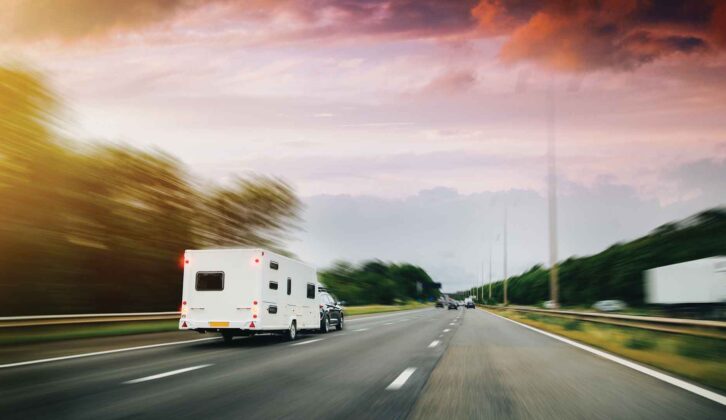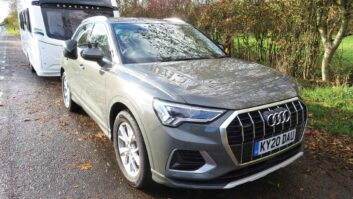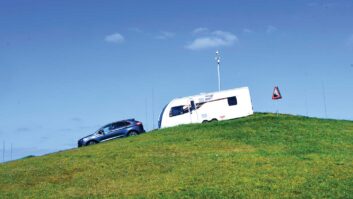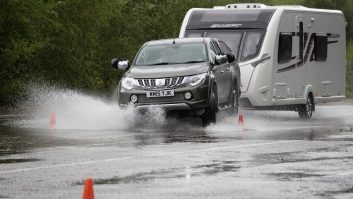Caravanning opens up a whole new world to enjoy. Some of your trips might be close to home, but the chances are you’ll want to explore further afield, which is where knowing how to tow a caravan long distances safely comes in.
Reaching distant destinations means towing long distances and journeys of several hundred miles can be a daunting prospect for newcomers to caravanning. But it’s nothing to be intimidated by. If you can tow five miles, you can tow 500.
The key to stress-free towing for any distance is good preparation. It pays to prepare with extra care before tackling a long journey. Combined with careful driving, that means you’ll be able to drive from one end of the country to the other, both safely and enjoyably.
Preparing your car
Having the best caravan tow car will set you on your way to safe, stable towing, but you should still thoroughly prepare your car before a wheel is turned. Check the tyre pressures are correctly adjusted for towing. Typically, the recommended pressure will be a little higher than for everyday driving.
You should be able to find the pressures in the vehicle’s handbook or on a sticker, which should be either under the fuel filler cap or on a door jamb. And before you put the tyre pump away, check the spare, if your car has one. You’ll be glad that you did if you get a puncture.

Make sure the vehicle has enough oil. It’s sensible to do this a few days before your long trip, so that you have enough time to top up the oil if necessary.
Check the screenwash level as well, filling up as required with screenwash that’s appropriate for the season. If you have a formula designed to be used all through the year, this might still need to be diluted to different strengths, depending on the temperature.
The night before you set off, make sure the windscreen, external mirrors and lights are clean and clear.
You can get more insight into what to do to get your vehicle ready for towing by taking a look at our tips to preparing a tow car for the new season.
Preparing your caravan
Your caravan will also benefit from a few checks before any long journey. As with the car, the caravan tyre care is key. Make sure they are correctly inflated, especially if the van has been standing for a long time.
It’s also a good idea to check the tread depth (there should be at least 1.6mm of tread around the central ¾ of the tyre and all the way around), and make sure there are no bulges or cuts. This is best done some time before the journey, to allow time for any problems to be fixed.

Likewise, you don’t want to discover that a bulb has blown when the family are sitting in the car, waiting to set off. So, after hitching up a caravan to your car, check all of the lights are working a few days before travelling, repeating the checks on the day as a final precaution.
To take a belt and braces approach, it’s also worth checking the wheel nuts are correctly tightened.

Before setting off, make sure the gas is turned off at the cylinder and that all of the hoses and cables you will be needing at your destination have been stowed where they should be.
If you are travelling a long way from home, then perhaps you will be away for a long time. It’s easy to overload the van when staying away for a couple of weeks or more. If you are in any doubt, head for a public weighbridge to check.
Expect the unexpected
Be sure your caravan breakdown cover is up to date, and check that it covers you while towing. You probably confirmed this when you first took out the policy, but if not, be certain before you undertake a long journey with your van.
You may put most of your clothing in your tourer when loading a caravan, but it’s advisable to have coats for the driver and passengers to hand, in case you break down. Even in summer, a lightweight waterproof will save you a soaking while waiting for the recovery truck to arrive.
It’s sensible to have a few drinks and snacks in the car, and carrying hi-vis vests for everyone is also prudent.
Choosing your route
Having the best caravan sat nav takes all the effort out of route planning, and it can be tempting to let your electronic co-pilot take the strain. However, it’s still worth making the effort to have a preferred route in mind before you set off.
It’s a good plan to have some idea of where you would like to stop to break the journey. Some motorway services are easier to negotiate with a caravan than others, and most of us will have a favourite café chain.
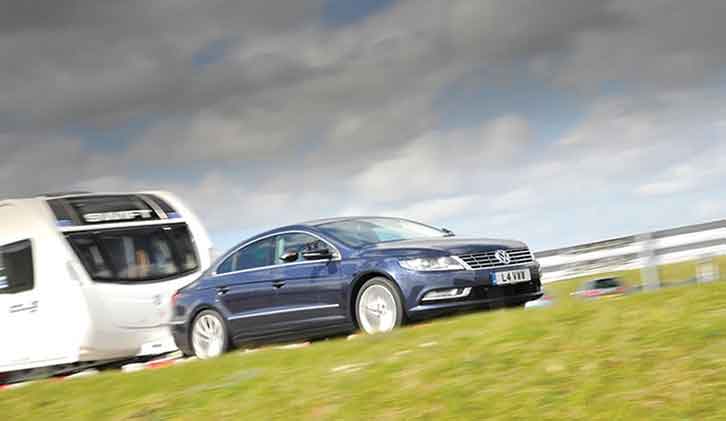
Check for any major roadworks or road closures on your route before you set off and amend your plans, to avoid any potential logjams.
The most important part of the route is the last few miles. The most direct route to the best caravan sites might not be the better one – take a look at the site’s website or phone ahead to find out about their recommendation.
Check the weather
Unless the forecast is dire, bad weather is unlikely to stop you, but it pays to be prepared. You might decide to alter your route to avoid high winds, and the threat of rain will be a reminder to pack suitable clothing. It might also prompt you to replace worn wiper blades.
Take regular breaks
The Highway Code recommends taking a 15-minute break from driving every two hours. It’s advice well worth heeding while towing a caravan, which places extra demands on the driver.
A cup of coffee or tea will perk you up, but be wary of relying too much on caffeine. Although it will make you feel alert and awake for a while, once the effect wears off, you might feel more tired than before.

On a long journey, it really helps if there are two of you (or more) who can share the driving.
Of course, a good night’s rest the night before a long drive also helps.
Slow and steady
One of my caravan towing tips is to take your time – towing is not something to be done in a rush. So if you’re the kind of person who likes to set targets and keep to a schedule, give this character trait the day off while you’re towing. The journey takes as long as it takes.
Stick to the speed limits when towing a caravan, or below if appropriate. In windy weather, dropping your speed to just below 60mph can make a real difference to how both car and caravan behave.
The verdict on towing a caravan over long distances safely
Towing a caravan safely over longer distances is well within the capabilities of any competent driver. So long as car, caravan and driver are all well prepared, the journey shouldn’t end up feeling like something to be endured – it should be the pleasurable start of your holiday.
Something that can be an important towing aid is a stabiliser – see what I had to say about caravan stabilisers, including why they work and the role they play.
Lead image: Getty Images
Future Publishing Limited, the publisher of Practical Caravan, provides the information in this article in good faith and makes no representation as to its completeness or accuracy. Individuals carrying out the instructions do so at their own risk and must exercise their independent judgement in determining the appropriateness of the advice to their circumstances and skill level. Individuals should take appropriate safety precautions and be aware of the risk of electrocution when dealing with electrical products. To the fullest extent permitted by law, neither Future nor its employees or agents shall have any liability in connection with the use of this information. You should check that any van warranty will not be affected before proceeding with DIY projects.
If you’ve enjoyed reading this article, why not get the latest news, reviews and features delivered direct to your door or inbox every month. Take advantage of our brilliant Practical Caravan magazine SUBSCRIBERS’ OFFER and SIGN UP TO OUR NEWSLETTER for regular weekly updates on all things caravan related.
